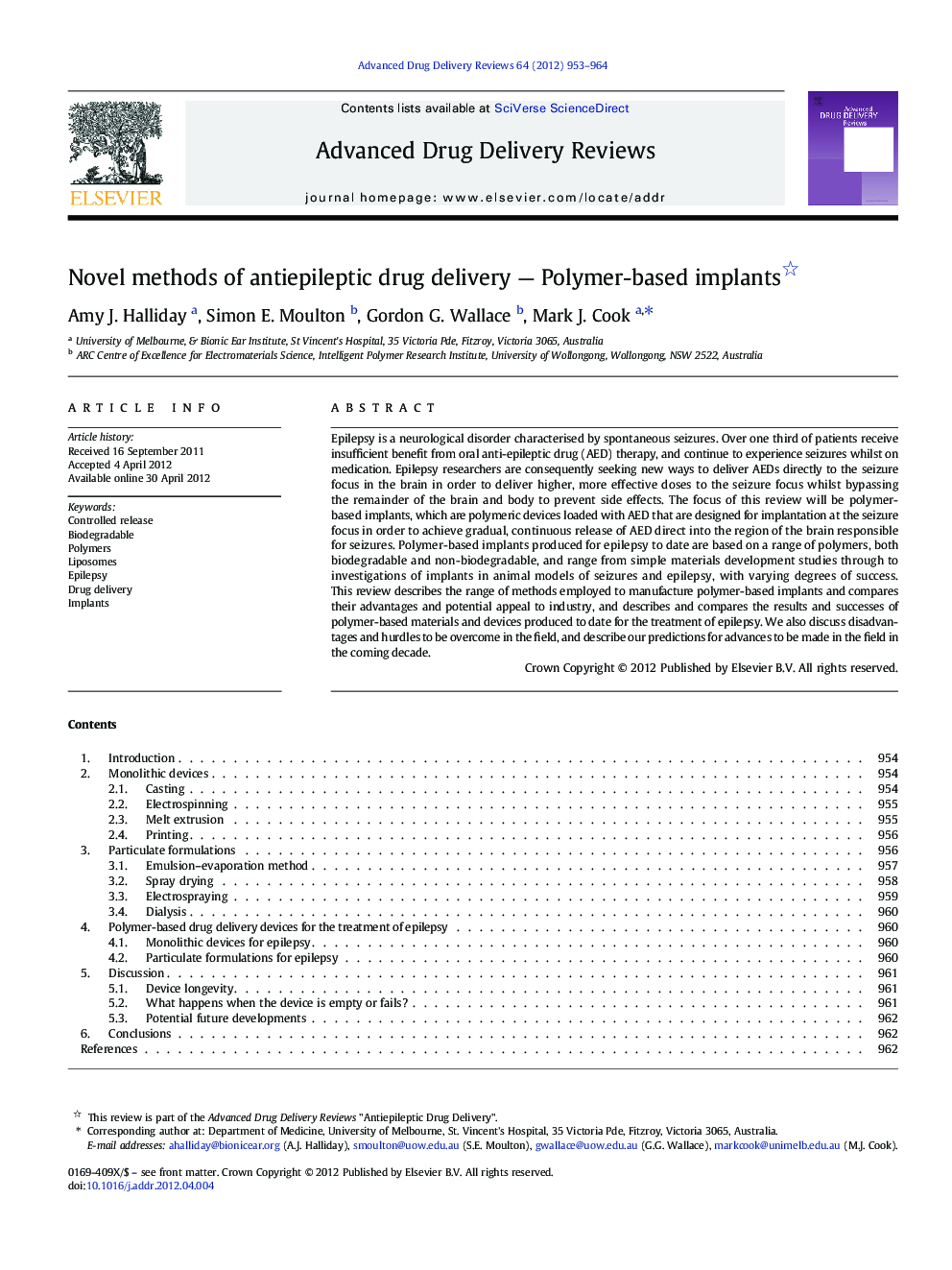| Article ID | Journal | Published Year | Pages | File Type |
|---|---|---|---|---|
| 2070994 | Advanced Drug Delivery Reviews | 2012 | 12 Pages |
Epilepsy is a neurological disorder characterised by spontaneous seizures. Over one third of patients receive insufficient benefit from oral anti-epileptic drug (AED) therapy, and continue to experience seizures whilst on medication. Epilepsy researchers are consequently seeking new ways to deliver AEDs directly to the seizure focus in the brain in order to deliver higher, more effective doses to the seizure focus whilst bypassing the remainder of the brain and body to prevent side effects. The focus of this review will be polymer-based implants, which are polymeric devices loaded with AED that are designed for implantation at the seizure focus in order to achieve gradual, continuous release of AED direct into the region of the brain responsible for seizures. Polymer-based implants produced for epilepsy to date are based on a range of polymers, both biodegradable and non-biodegradable, and range from simple materials development studies through to investigations of implants in animal models of seizures and epilepsy, with varying degrees of success. This review describes the range of methods employed to manufacture polymer-based implants and compares their advantages and potential appeal to industry, and describes and compares the results and successes of polymer-based materials and devices produced to date for the treatment of epilepsy. We also discuss disadvantages and hurdles to be overcome in the field, and describe our predictions for advances to be made in the field in the coming decade.
Graphical abstractFigure optionsDownload full-size imageDownload high-quality image (100 K)Download as PowerPoint slide
